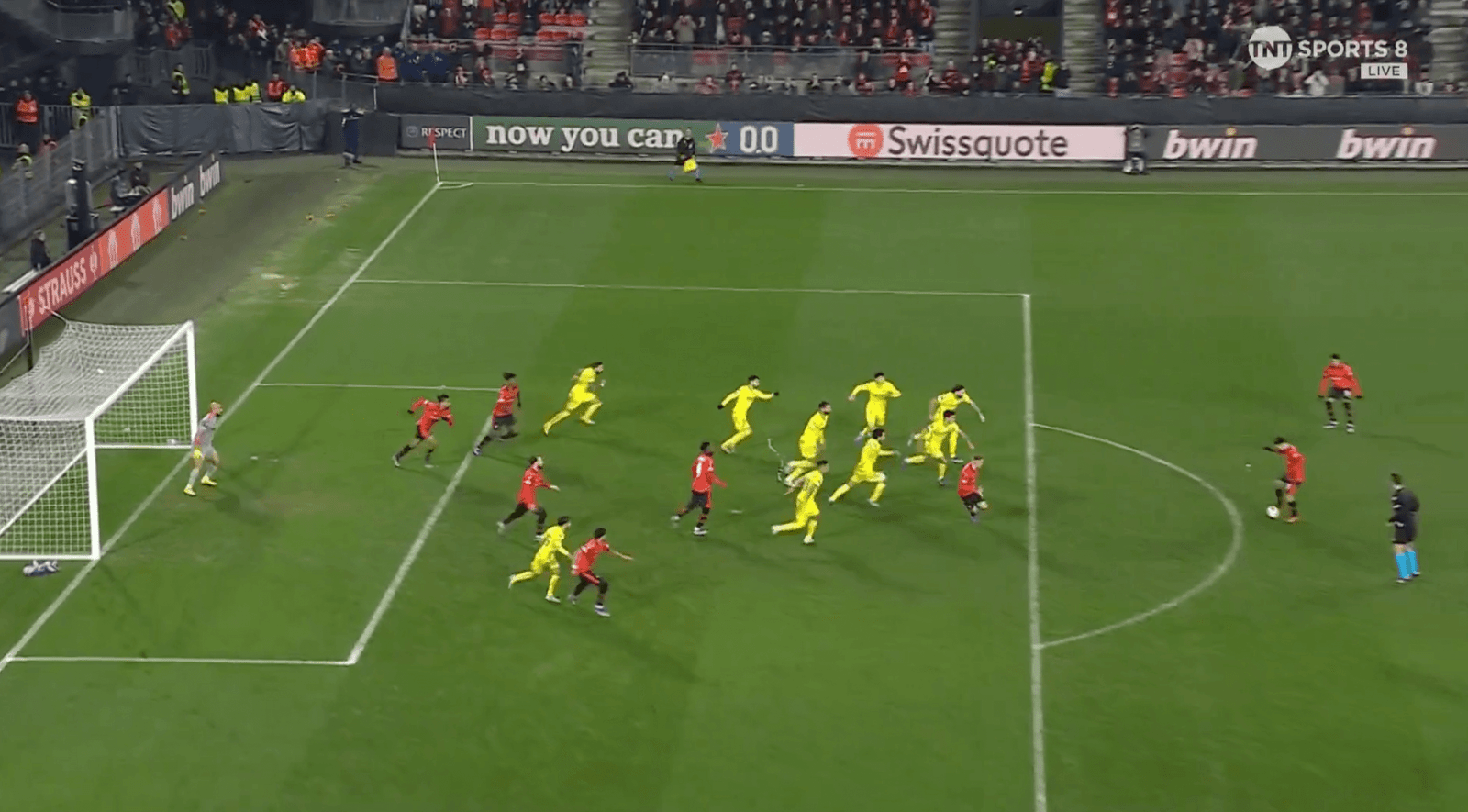There was confusion in last night’s Europa League group finale between Rennes and visitors Villarreal as the VAR disallowed the home side an equaliser in the 11th minute of second-half stoppage time.
Lorenz Assignon thought he had scored the goal to send the French side top of Group F, a result that would have sent them straight through to the competition’s last 16 in March.
But, to the bewilderment of him and his team-mates, a VAR intervention chalked it off.
Villarreal held on for the three points, which meant they won the group and Rennes were consigned to a second-place finish and a place in February’s play-off round when eight last-16 spots will be up for grabs.
So, what happened?
As the second half went into its 10th minute of added time, after a minimum of six had initially been indicated, Rennes’ Enzo Le Fee stood over a free kick just outside the Villarreal penalty area with his side facing a 3-2 deficit.
His shot beat goalkeeper Pepe Reina but came back off the post and bounced through the sea of players in the box — crucially, without touching any of them — to the feet of the free-kick taker…


Le Fee’s attempt to play the ball back into the box was blocked, but it was eventually recycled to his team-mate Ibrahim Salah out on the left wing. Salah’s cross was only cleared as far as Assignon a yard or two from the penalty spot and the 23-year-old hammered a first-time effort past Reina, sending the Rennes players and supporters wild in the belief they had done enough to win the group.
But, just over a minute later, Turkish referee Atilla Karaoglan signalled that the goal had been ruled out after a fairly swift VAR check. The confusion arose because the VAR review indicated that an offside infringement had occurred, leaving commentators and fans alike looking for one on the replays.
Rennes thought they had scored to secure a place in the #UEL last 16, deep into added time, but VAR had other ideas 😳
Can anyone work out why this goal was disallowed? 🤯 pic.twitter.com/WHsxtuEt6I
— Football on TNT Sports (@footballontnt) December 14, 2023
Why was the goal ruled out?
The International Football Association Board (IFAB), the game’s lawmakers, state in the free-kick rules (Law 13.3) that:
“If, after the ball is in play, the kicker touches the ball again before it has touched another player, an indirect free kick (or direct free kick for a handball offence) is awarded to the opposing team, to be taken from the place where the infringement occurred.”
As Le Fee was the first player to touch the ball after his free kick had struck the frame of the goal and returned to him, that rule came into play. Had the ball even flicked any other player on the pitch accidentally before coming back to Le Fee, the goal would have been allowed to stand.
You might be familiar with the same rule applying to penalty kicks. Law 14.2 states:
“If, after the penalty kick has been taken, the kicker touches the ball again before it has touched another player, an indirect free kick (or direct free kick for a handball offence) is awarded.”
If a penalty is saved by the goalkeeper, the ball is once again active for the taker, who is permitted to touch the rebound.
What was the reaction?
After the match, Rennes manager Julien Stephan admitted he had not been aware of this law regarding free kicks.
“I also learned (this rule) at that time,” he said. “I knew it was the case from the penalty spot, but I didn’t think it existed from a free kick.”
His opposite number, Marcelino, said: “I was thinking that nothing goes right (before) when they disallowed the goal. We had chances to put ourselves 4-2 up. It’s football.”
(Top photo: TNT Sports)
Read the full article here


